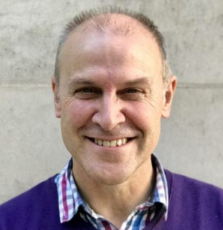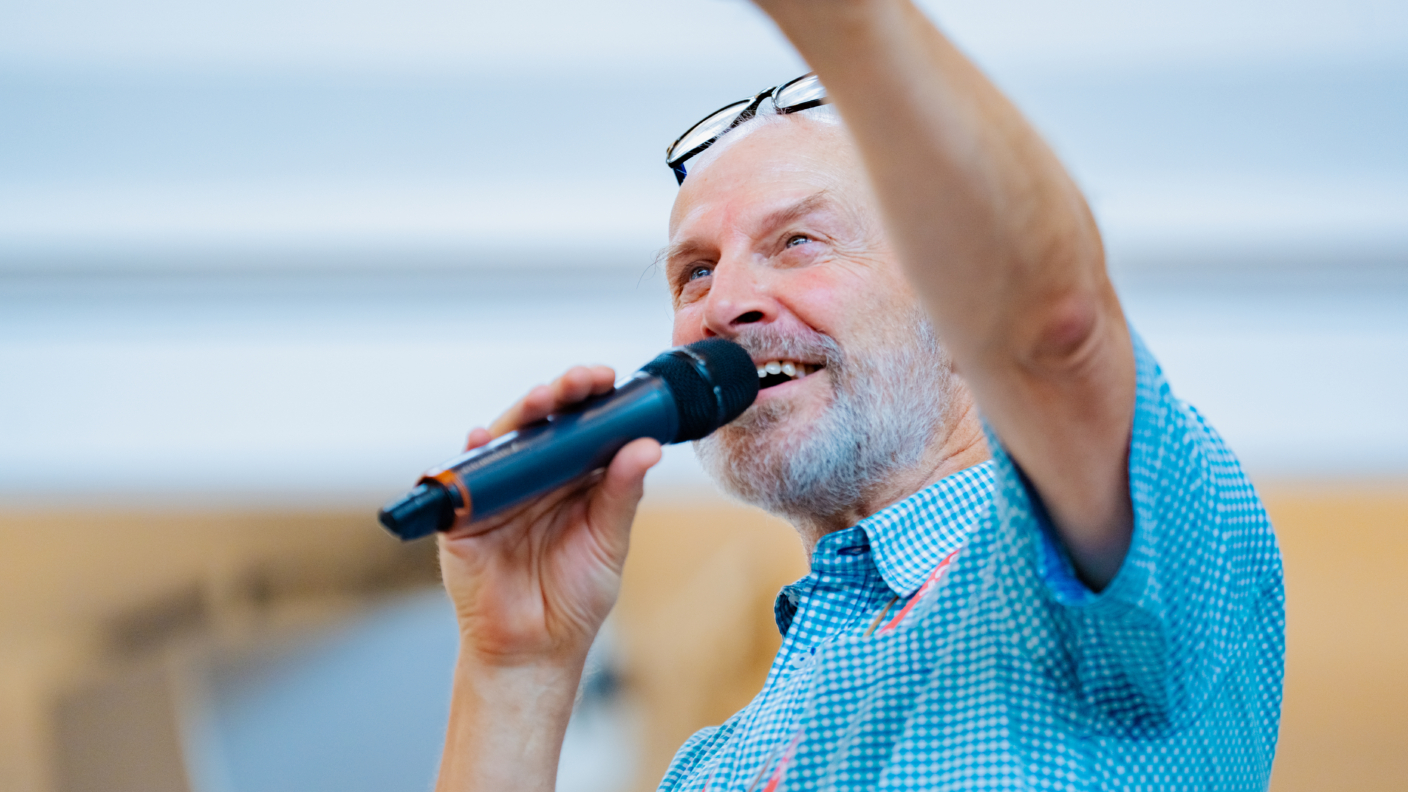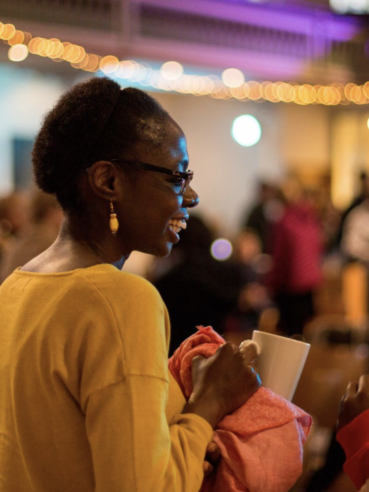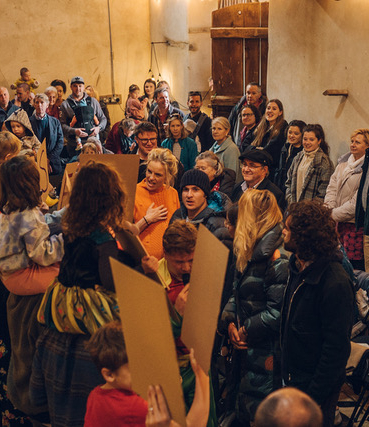When I was called in 2015 to the revived See of Islington, I could not have imagined the journey God was inviting me on. With no direct geographical responsibility, the role was unique and reflected the creativity of the then Bishop of London, Richard Chartres — a missionary bishopric dedicated to enabling church planting, revitalisation, and church growth in the Diocese of London and, by invitation, across the Church of England. It has been a privilege to serve in this way, walking alongside all kinds of leaders, churches, and communities, as together we have sought to see the Church renewed and multiplied.
The task was simple to describe but has become vast in scope: to encourage and enable parish revitalisations and church multiplication, to create and strengthen resource churches, and support and energise new initiatives such as Fresh Expressions, Myriad, and other lay-led planting across the Church of England — not only in London, but by invitation across the nation. Every planted church comes under the oversight of their local bishop so the See of Islington has never been about building a virtual diocese, but rather about giving encouragement and episcopal support to those who are called to step out in mission to strengthen parishes and increase the Church’s confidence in the Gospel.
With the Gregory Centre for Church Multiplication (CCX) and our partners, it has been my privilege to champion church planting and multiplication in all its forms. I wanted to share some reflections on this mission.
Catalysing multiplication
From the start, multiplication has been the heartbeat of this work. We have rediscovered the biblical call to multiply and the practice of many Anglican churches through the centuries. CCX has sought to equip leaders through training, resourcing, and regional and national gatherings that build confidence and encourage action.
Over the last decade, the Plant and Grow Courses of CCX, as well as diocesan coaching programmes, have trained hundreds of church leaders and teams. The Multiply Conference has grown year by year, and in 2025 brought together over a thousand leaders to share learning and encouragement, praying and worshipping together as we reflect on what God is doing across his Church. I am so glad that CCX, led by H Miller and the team, will continue to play a vital role in catalysing this multiplication work as they help the Church to reach new people in new and renewed ways with the love of Christ. Stay in touch with their work.
Supporting resource churches
Resource churches have become a key part of the Church’s ‘mixed ecology’ of mission. What began as a handful of experimental plants has now grown to around 130 churches across 27 dioceses. The fruit of this has been remarkable: between 2016 and 2023, attendance in these churches increased by 238%, with the number of under-16s growing by 400%. Whilst there is always some people transfer when new leadership arrives in churches or when new churches begin, research shows that resource churches are reaching unchurched and dechurched people in significant numbers and they are producing disproportionately high numbers of vocations. Each church planted by a resource church is a parish revitalised and saved.
Behind the statistics are stories of transformation. St Thomas’ in Newcastle, a resource church launched in 2016 by the Bishop of Newcastle, has since planted three new congregations and revitalised an inner-city parish. Time and again, I have seen how these churches not only grow themselves, but serve as catalysts for renewal and mission in the wider diocese.
Parish revitalisation
Our own experience of revitalising parishes in Tower Hamlets has shown me that this must be a key part of the Church of England’s strategy for renewal and growth.
When the Bishop of London invited Louie and me to take a team to St Paul’s Shadwell, it seemed like an impossible task: we were planting in one of the most deprived boroughs in England, with church attendance across all denominations at less than 1%, and a Muslim population of 45%. And yet, we experienced favour and countless opportunities to share the Gospel and see Jesus impacting people’s lives. By taking a team of willing and energetic volunteers, we learned to share the good news of Jesus, make disciples and develop leaders in that unique context. We had the opportunity of sending our own curates and teams to other parishes that were on the verge of closure or asking us for help. God added to our number, if not daily, certainly weekly, those who were being saved. And if it could be done there, it could be done anywhere.
Our own experience is just one of so many parishes being brought back to life. Over the last 20 or so years, we have learned so much from our mistakes and learned from those who have discovered new ways of being faithful to Christ in today’s complex world. The Church of England should continue to consider the revitalisation of parishes, prayerfully, boldly and contextually.
Developing diocesan church planting strategies
It has also been my privilege to visit most of the dioceses in the country, giving support and advice to diocesan teams as they have sought to tackle the huge missiological challenges around them.
Critics have good reason to challenge strategies that lack prayerful discernment. But I have seen the Diocesan Support Team in Church House serve dioceses up and down the country in helping them think through using limited resources in carefully targeted ways. Out of a foundation of prayer, bold approaches to supporting churches in different ways around their dioceses has led to renewal and revitalisation over an extended time.
When a diocesan senior staff team is prepared to take measured risks, allocating resources in a focused way, supporting those leaders who they have invited to step out in faith in new ways, it always bears fruit. Sometimes this looks like supporting a resource church in revitalising parishes, or encouraging a network of small churches to work together in a creative way to reach young people, or even having the courage to close something in order that something new might emerge.
Lay-led planting
In recent years, we have also been able to invest in the vision of lay-led church planting. Myriad, launched with CCX in 2020 and now an independent charity, carries the ambition of seeing 10,000 lay-led communities established by 2030. This is not about replacing ordained leadership, but about encouraging and equipping clergy with new oversight ministry skills, who in turn can support and release lay leaders as they pioneer in their own contexts.
I think of a parish in the Midlands, where a lay team responded to God-given call to reach unchurched families. They launched a café church, creating a worshipping community that reached families who had never set foot in a Sunday service before. These fresh expressions of church remind us that the Spirit is always ahead of us, calling us to join in God’s mission where people are.
Thought leadership
Alongside the practical work of planting and resourcing, I have been grateful for the chance to contribute to wider conversations about the future of the Church. Whether through writing, training, or chairing the Fresh Expressions board, my aim has been to encourage a culture where innovation is embraced, and where bishops and leaders have the confidence to give permission to new forms of mission.
Research from CCX has helped shape and direct thinking nationally, but more than that, it has shown that church planting is not a fad or a niche strategy. It is central to the renewal of the Church’s life and witness in this country.
Episcopal support
The See of Islington has been a lightning rod for supporting church planting in the Church of England. There is no doubt that being a bishop in this role has opened doors, grown influence, and established a positive narrative around this missional activity precisely because there is a bishop amongst the bishops who is speaking up for this. I often describe my role as being an “institutional irritant”, like a grain of sand in an oyster shell. Over time, and with the right conditions, it has the potential to create a beautiful pearl.
In institutional life, we like the status quo, we like business as usual, and yet we also need challenges, not just from outside but also inside. Hopefully, as an irritant for mission, I haven’t been too irritating (!), but I do see the need to keep nudging and speaking up for mission and innovation in the church. And then to keep encouraging that mission and innovation when it is beginning to take root and grow.
It has also been interesting to see other denominations in England, and further afield, explore these new practices, precisely because it has episcopal support at an institutional level. This has expanded CCX’s reach into Europe, Asia, Australia and beyond, with Anglicans, Lutherans, Roman Catholics, Pentecostals, and so many more.
Looking ahead
It is not for me to judge whether reviving the See of Islington has proven successful. What I can say is that in the past decade we have seen new congregations planted, parishes renewed, leaders trained, and a revived confidence in mission across the Church of England. For that, I give thanks to God.
This work is far from finished. I want to see the See of Islington continue to play its part in the mission of the Church. But whatever happens to the See, we must not question the future of church planting. To lose momentum now would be to squander a decade of investment and miss a vital opportunity. To carry this forward is to ensure that planting and multiplication remain part of the Church of England’s DNA — not as a side project, but as a core expression of what it means to be a Church shaped by the gospel, alive and active, reaching new people.
My prayer is that this vision will not only be held onto, but deepened and expanded. The harvest is plentiful, the workers are still few, and the call of Jesus to make disciples has not changed. The past ten years have convinced me more than ever that when we take risks for the gospel, God is faithful. Let us stay the course, assured that the future belongs to him — and so does the Church.












